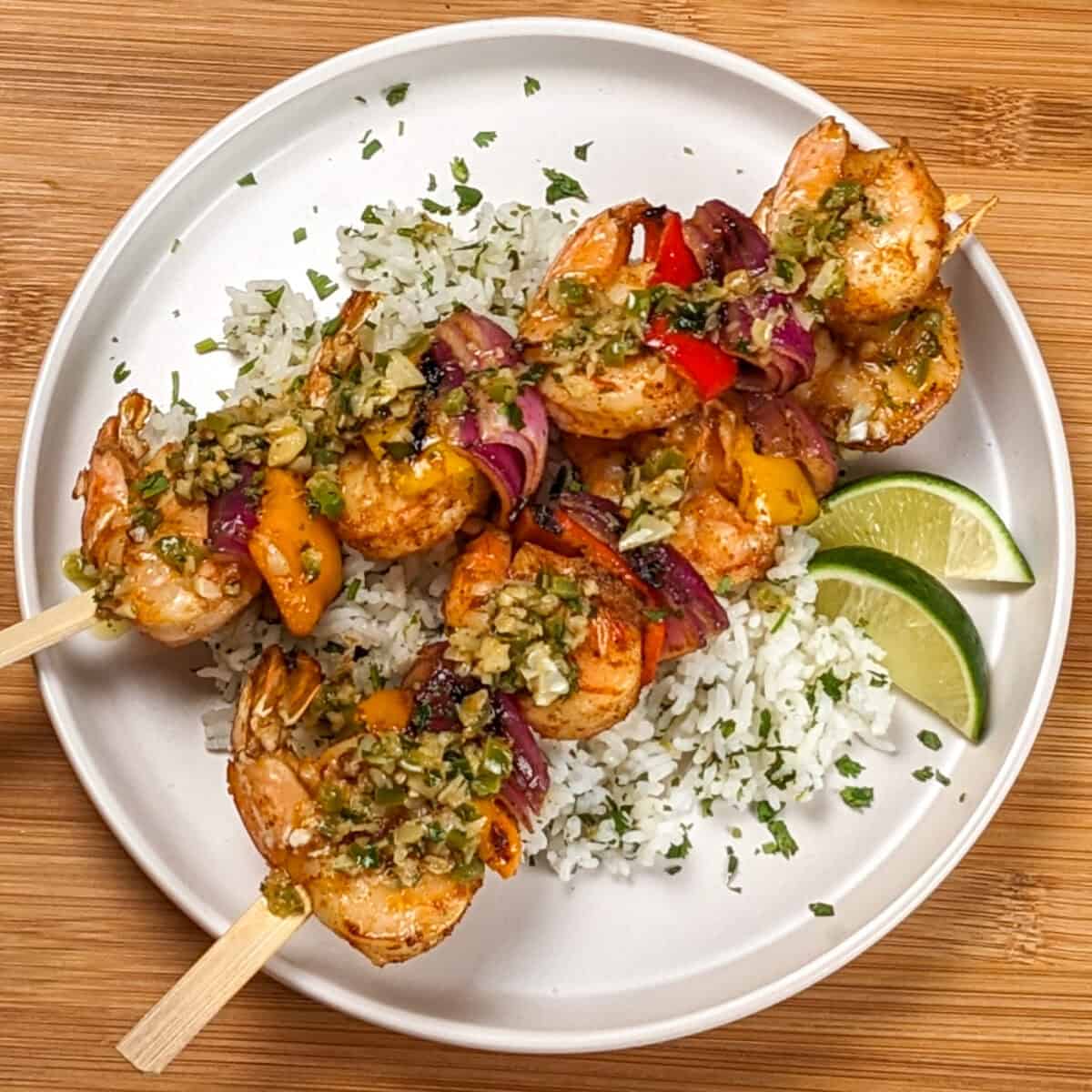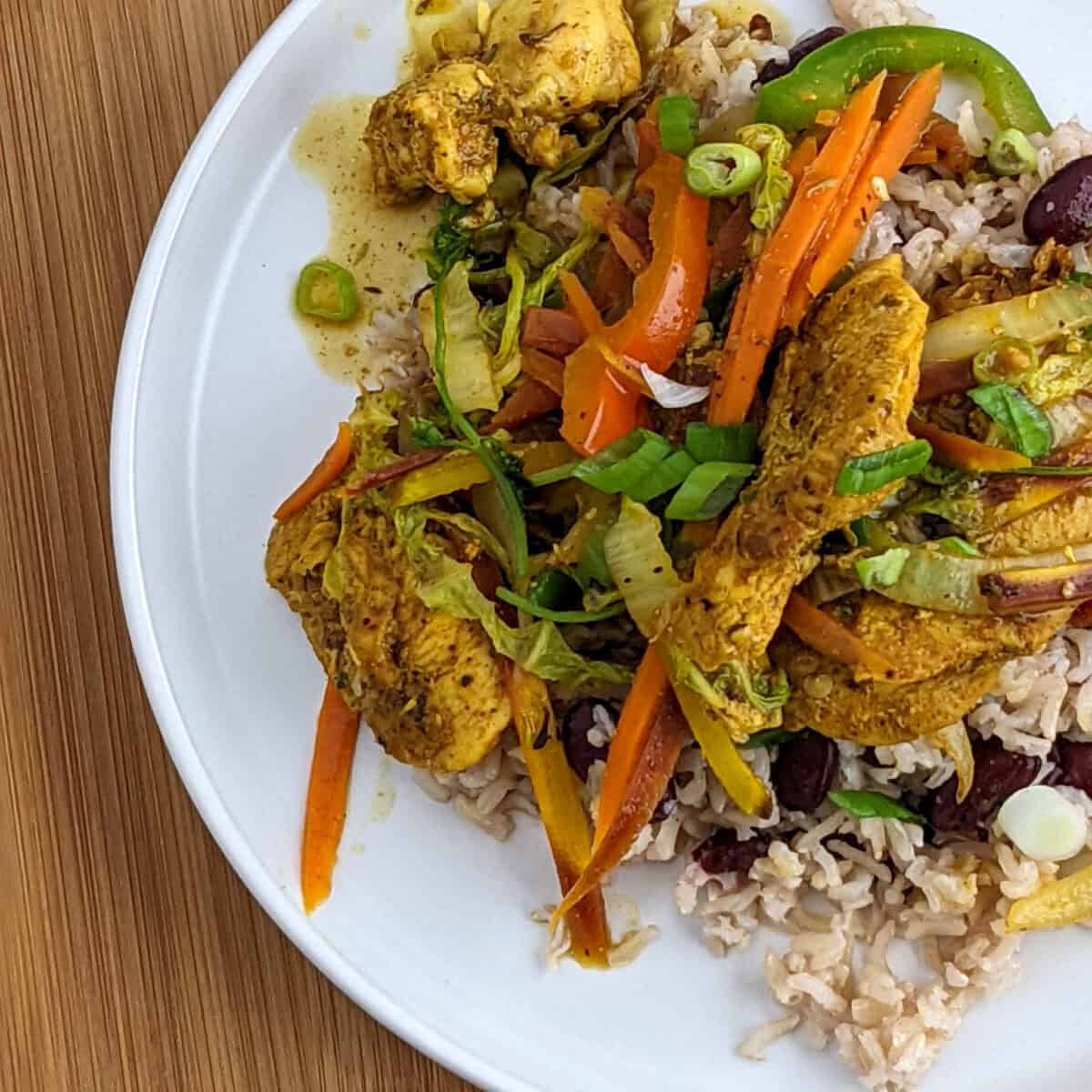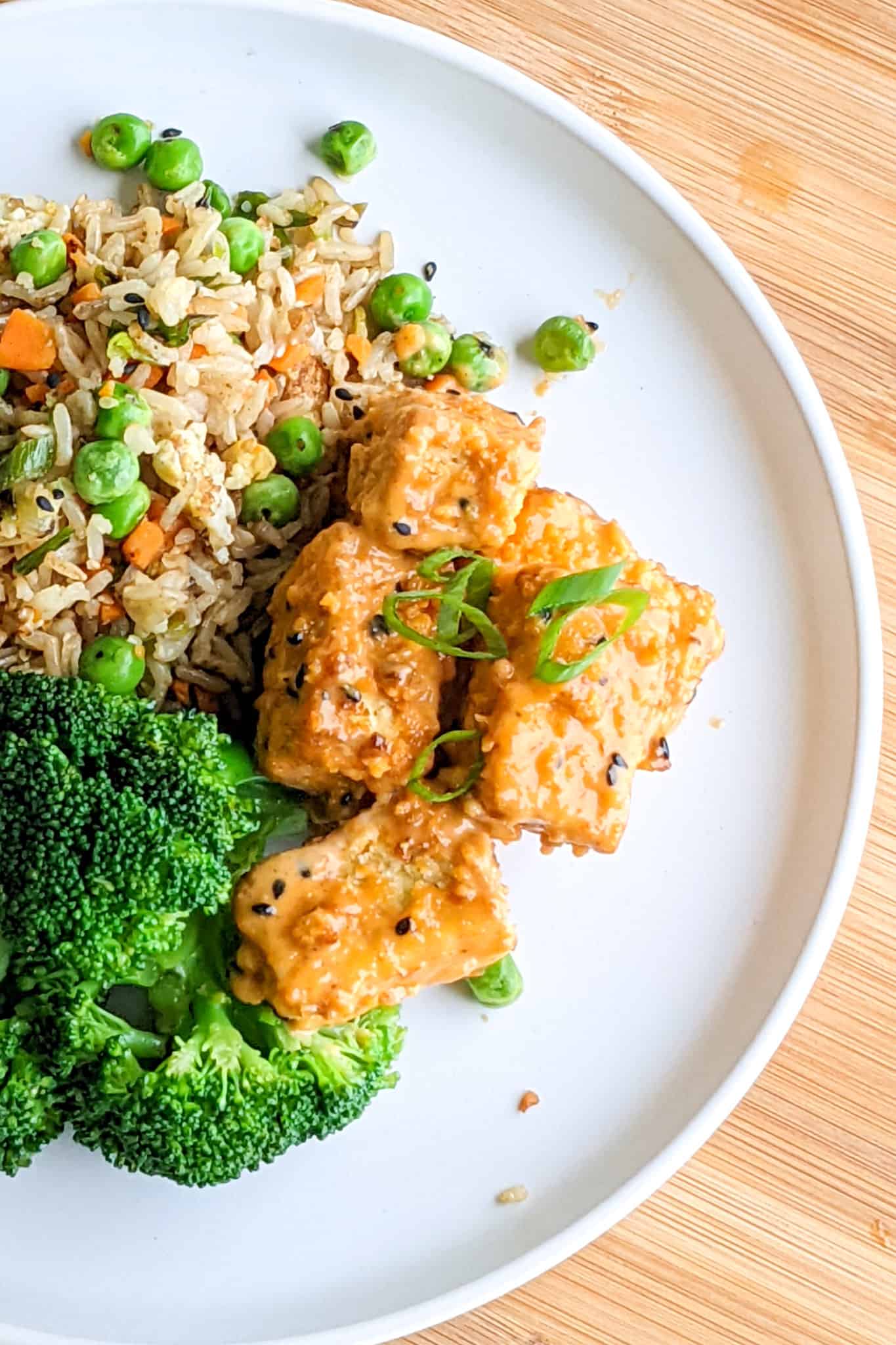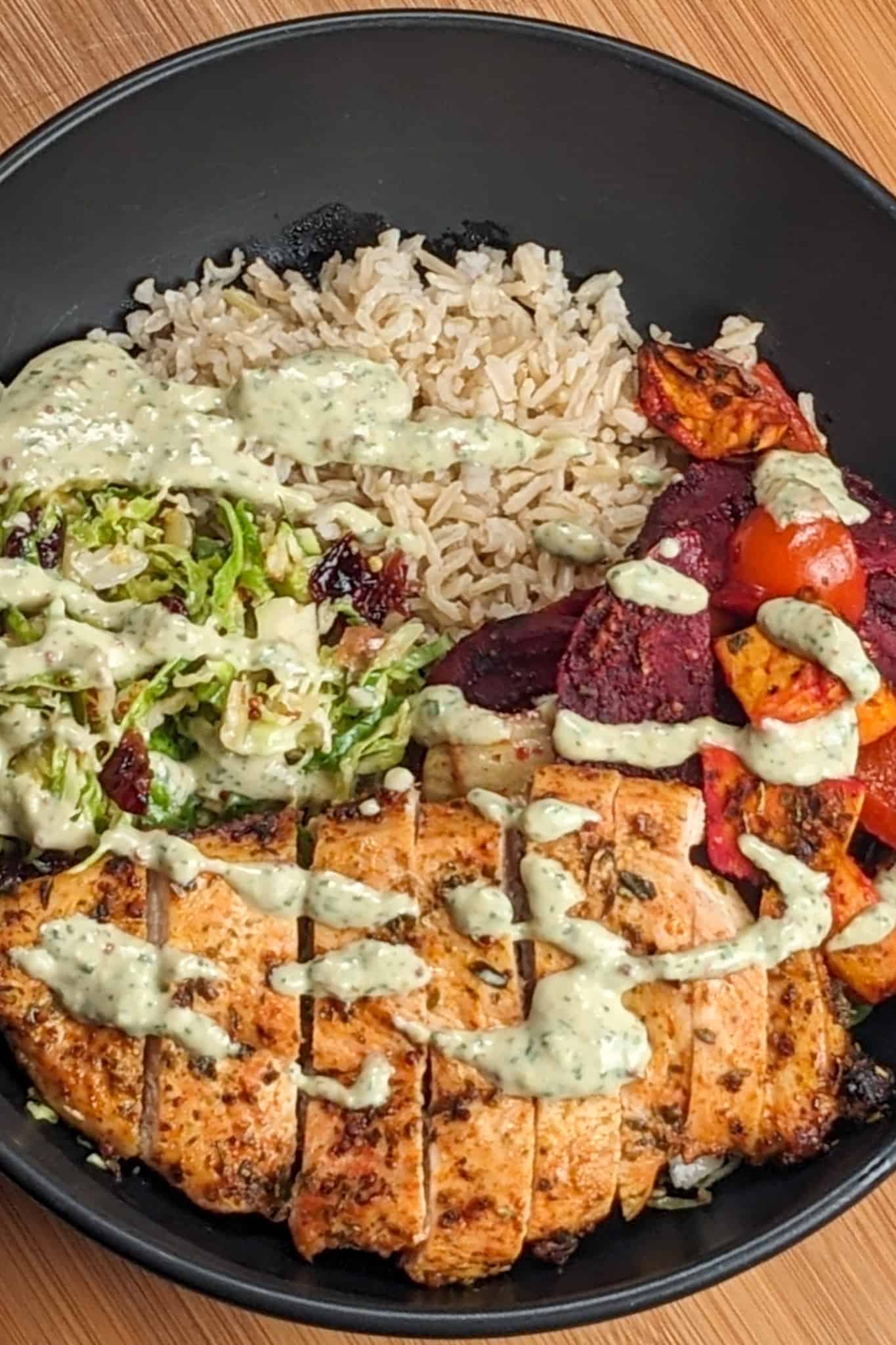In this post, you'll discover easy rice recipes that anyone can master, with culinary education on rice and cooking tips that offer a variety of simple techniques to cook perfect rice confidently every time.

Table of Contents
Jump to:
- Easy Rice Recipes Roundup
- The Home Cook's Repertoire
- The Importance of Rice in Global Cuisine
- Is Rice Gourmet?
- Rice Types
- Top 2 Important Rules
- 3 Common Cooking Methods
- Culinary Glossary
- 10 Common Substitutions
- Get Creative with Plain Rice
- Equipment with Cooking Instructions
- 7 Important Cooking Tips
- Frequently Asked Questions
- Simple Storage and Reheating Tips
- Side Dish Recipes
- More Cooking Tips
- 📖10 Best Easy Rice Recipes
- Subscribe to my YouTube Channel.
- Have a Comment or Question?
Easy Rice Recipes Roundup
Welcome to the Easy Rice Recipes Roundup, where I’ve carefully selected recipes that strike the perfect balance between simplicity and bold flavors. I use these flavors throughout my recipe site. These dishes are designed to make your life easier while delivering incredible bold taste.
Each recipe is crafted to bring out the best in rice, offering a variety of techniques and flavors from around the world that any home cook can master. So, let’s dig into these easy, delicious rice dishes that will enhance your meal experience! As a culinary teacher, I don't just develop recipes but also provide culinary skills to improve yours no matter what level. Enjoy!

The Home Cook's Repertoire
Rice is one of the most versatile ingredients you can find in the kitchen. From whipping up a hearty main course to a flavorful side dish, it can transform any meal with minimal effort. From aromatic basmati to nutty wild rice, the possibilities are endless, making rice an essential part of any home cook's repertoire.
The Rice Catastrophe
Yet, for such a simple ingredient, rice has a funny way of tripping people up. One minute, you're ready to serve up a fluffy, picture-perfect bowl of rice, and the next, you're staring at a sticky, mushy disaster.
Cooking rice can feel intimidating, especially when it seems like one wrong step sends your meal down the drain. But here's the good news: With the right techniques, anyone can master it. The secret is in understanding the basics, and once you’ve got that, it’s smooth sailing!
But There's Hope
By the end of this post, you’ll have a variety of simple rice dishes at your fingertips, using different methods that guarantee perfect rice every time—whether you're cooking on the stovetop, using a rice cooker, or even whipping up some flavorful fried rice.
Plus, as a ⚠️live blog, this post will be frequently updated ⚠️with new quick and easy rice recipes as they are added to the site, so you can always find new inspiration right here. Get ready to expand your cooking skills and add a world of rice dishes to your kitchen!
The Importance of Rice in Global Cuisine
Rice is more than just a side dish—it’s a global staple that nourishes billions of people every day. In many cultures, rice is not only a source of sustenance but also deeply embedded in traditions, rituals, and the identity of entire regions.
From the fields of Asia to the islands of the Caribbean, rice is steamed, fried, boiled, or baked, and it adapts to countless flavors and cooking methods, making it a true culinary chameleon in world cuisine:

North America
Wild rice, native to the Great Lakes region, is a nutrient-packed grain that was traditionally harvested by Native American groups. It’s still a beloved dish today, often enjoyed in a rich pilaf. I recommend checking out The Sioux Chef's Indigenous Kitchen by Chef Sean Sherman to explore recipes by a chef who goes back to his roots using what was native to his people.

Fun fact! Wild rice isn’t actually rice—it’s an aquatic grass native to North America that just happens to look like rice. Talk about an identity crisis!
Then you’ve got Louisiana’s Creole red beans and rice, a Southern classic that’s hearty and packed with flavor. This dish brings together perfectly seasoned rice and red beans, representing the Creole and Cajun traditions of the state. I recommend checking world-renowned Chef Leah Chase's The Dooky Chase Cookbook on her restaurant and Creole cooking.
Down in the Lowcountry of South Carolina and Georgia, the Gullah people have a deep history with rice cultivation. Their rice dishes are influenced by local seafood and the rich cultural heritage of the region, adding a unique layer to Southern cuisine.
Caribbean
Jamaica’s peas and rice is a staple dish made with rice and either pigeon peas or kidney beans, often cooked in coconut milk for that extra layer of rich, tropical flavor. Over in Puerto Rico, you’ll find arroz con gandules, an iconic dish where rice and pigeon peas come together with sofrito, a flavorful blend of onions, peppers, garlic, and herbs.
Cuba’s imperial rice takes things up a notch with layers of rice, chicken, vegetables, and sometimes cheese, showcasing a beautiful fusion of Spanish and Cuban flavors.
And from Trinidad and the Virgin Islands, you get pelau—a one-pot wonder with meat (usually chicken), pigeon peas, vegetables, and rich Caribbean spices, all simmered in coconut milk for a dish that’s as comforting as it is flavorful. There's an instant pot recipe by This Bago Girl that you must try out, looks delicious!
Africa
In West Africa, jollof rice reigns supreme—a beloved dish simmered in a rich, spiced tomato-based sauce. It’s a staple at celebrations and varies from country to country (e.g., Senegal, Nigeria, and Ghana), with each version offering its own twist. My Everyday Lagos: Nigerian Cooking at Home and in the Diaspora is an incredible cookbook that breaks down the basics of Nigerian cuisine that I practically refer to all the time.
Heading north, you'll find Egypt's koshari, a hearty street food made with a mix of rice, lentils, chickpeas, and pasta, all topped with a tangy tomato sauce and crispy fried onions. It’s a carb-lover’s dream!
Finally over in Morocco, rice takes on a different role from Moroccan rice pilaf, where fragrant spices like saffron, cinnamon, and turmeric are blended with dried fruits and nuts to create a beautifully balanced sweet and savory dish.
Latin America
In Mexico, Spanish rice, also known as Mexican rice, is a flavorful side dish made by cooking rice with tomatoes, garlic, onions, and spices, giving it a vibrant color and taste that perfectly complements any Mexican meal.
Meanwhile, in Haiti, you’ll find djon djon rice, a distinctive dish made with black mushrooms called djon djon, which gives the rice its signature dark color and deep, earthy flavor. Both dishes are packed with bold, unique flavors that highlight the culinary traditions of their respective countries.

Asia
In Japan, sushi rice is the essential base for sushi rolls, made from short-grain rice seasoned with vinegar, sugar, and salt to create the perfect balance of flavor and texture.
In Korea, multigrain purple rice, or heukmi bap, is a nutritious blend of white and black rice mixed with other grains, giving it a striking purple color and a hearty, chewy texture.
Over in India, biryani is a fragrant, spiced rice dish layered with marinated meats or vegetables, known for its rich flavors and intricate preparation.
Finally, in China, stir-fried rice is a quick, flavorful dish made with leftover rice, stir-fried with vegetables, protein, soy sauce, and garlic—a classic go-to in Chinese cuisine. I also recommend Wok's of LIfe, which is a self-titled cookbook filled with delicious Chinese American cuisine, something I refer as well very often.
Europe
In Spain, paella is a renowned dish from Valencia, made with Bomba or Calasparra rice, saffron, and a mix of proteins like chicken, seafood, or rabbit. The rice is cooked in broth, creating a crispy bottom layer known as socarrat.
Meanwhile, in Italy, risotto is a creamy dish crafted from Arborio or Carnaroli rice, which is slowly cooked in broth and stirred to release starches, resulting in a rich, velvety texture. Risotto can be enhanced with ingredients like mushrooms, seafood, or saffron, making it a versatile Italian favorite.
Middle East
In Lebanon, vermicelli rice is a staple dish made by toasting vermicelli noodles in butter or oil, then combining them with rice and cooking it all in broth. This creates a nutty, flavorful side that’s often served alongside grilled meats or stews, adding a rich, comforting element to any meal.
What other rice dishes do you love that I may have missed? Drop a comment below and let me know—I’d love to hear your favorites!
To Me
Rice has always been important to me, not just as a chef but as someone deeply rooted in my Caribbean background. Growing up, rice was a staple in almost every dish I made and ate, whether it was a simple side or the star of the meal.
There’s something so comforting about it, and it's woven into the culinary traditions I cherish. What about you? What rice dishes do you enjoy cooking or eating? I’d love to hear your favorites—share them in the comments below!
Is Rice Gourmet?
When I was young, Caribbean food, especially dishes with rice, wasn't considered gourmet food. I saw it as hearty, rustic, and a bit too casual. And as a professional who was also an adolescent, I was so focused on finding ways to make my dishes "fancy" that I didn’t realize I was missing the beauty already on the plate that was part of where I came from.
I wanted to elevate those flavors without knowing that many chefs were already paving the way. Chefs like Alain Lemaire and Sendys Nervil showed me that our Haitian cuisine could be both comforting and gourmet.
Their creativity in reimagining traditional dishes inspired me to embrace my roots and experiment with my own cooking, blending my heritage with more modern techniques. Rice, with its simple versatility, became an essential part of my culinary identity.
The New and Old
So, I invite you to join me on this journey of exploring rice from all over the world. Together, we’ll create and recreate easy rice dishes that fuse global influences, making each meal exciting and accessible. Let’s discover new ways to bring bold flavors to your table—whether you're cooking for the first time or the hundredth.
Rice Types
Knowing the different types of rice is crucial for any home cook or chef because each variety brings its own unique texture, flavor, and character to a dish. For example, basmati rice, with its long, fluffy grains and fragrant aroma, is perfect for Indian dishes like biryani, while sushi rice, with its short, sticky texture, is essential for creating authentic Japanese sushi.
Using the right rice not only enhances the dish but also stays true to the regional cuisine it represents. Whether it's jollof rice from West Africa, risotto from Italy, or paella from Spain, the type of rice you choose can elevate the entire meal, ensuring the flavors, textures, and traditions of the region are fully embraced.

This is why I spent time talking about how different countries make rice. Use the chart below to get a brief guide on the common types. - Chef Maika
| Rice Type | Best Suited For |
|---|---|
| Basmati | Pilafs, Indian dishes like Biryani, or as a side for curries |
| Jasmine | Southeast Asian dishes, stir-fries, and fried rice |
| Wild Rice | Pilafs, soups, and as a side for hearty meals |
| Arborio | Risotto, creamy rice dishes |
| Sushi Rice | Sushi, rice bowls, and sticky rice dishes |
| Brown Rice | Salads, bowls, and heartier main dishes |
| Long Grain White Rice | Everyday meals, casseroles, and rice bowls |
Top 2 Important Rules
Before we begin, there are a couple of things you should know. Cooking rice might seem straightforward, but mastering the technique can make all the difference between mushy grains and perfectly fluffy rice. Here are a few basic tips to ensure you get it right every time. Click here to learn more tips.
#1
First up, rinsing your rice is key. This simple step helps remove excess starch from the surface of the grains, preventing them from clumping together during cooking. Just run the rice under cold water until the water runs clear. I usually do it three times using a rice washer and strainer colander. Trust me, it’s worth the extra minute!
#2
Next, let’s talk about the water-to-rice ratio. This is where people often get tripped up. For standard white rice, the usual ratio is 1 cup of rice to 1.5 to 2 cups of water. For brown rice or wild rice, you’ll need a bit more water (usually 2.5 to 3 cups per cup of rice) since they take longer to cook.
You can measure it in a measuring cup or use the rice cooker's canister which usually has the measurement marking right on it. Getting this ratio right helps ensure your rice comes out just how you want it—neither too dry nor too mushy.
3 Common Cooking Methods
When it comes to cooking methods, there are a few options. The most common is boiling the rice, bringing the water to a boil before reducing the heat to a simmer and covering the pot. Steaming rice is another excellent option, especially for sticky rice varieties like sushi rice. A rice cooker is always a fantastic tool, taking out the guesswork and timing for most types of rice.
Whichever method you choose, make sure to keep the lid on during cooking to trap steam and evenly cook the rice. And remember, resist the urge to stir or peek! Learn more about these methods and the equipment used here.
Culinary Glossary
This section provides concise definitions of key ingredients and techniques to enhance understanding and improve cooking skills related to this article on easy rice recipes.
The Anatomy of the Grain
Yes, just like the title said, we are going to review the different parts of the rice grain. This will also help you understand other grains' makeup and what makes rice brown or white.
- Bran - The outer layer of the rice grain, rich in fiber and nutrients. This layer is present in whole grains like brown rice.
- Endosperm - The largest part of the rice grain, made mostly of carbohydrates. This is what remains in white rice after milling.
- Germ - The smallest part of the rice grain, containing essential oils, vitamins, and minerals. It’s often removed in white rice but remains in brown rice.
The Different Types
Below are common rice found in many dishes in the Americas.
- Basmati Rice - A long-grain rice known for its fragrant aroma and fluffy texture, commonly used in Indian and Middle Eastern cuisine. Learn more about it in my Spiced Basmatic and Quinoa Rice recipe.
- Jasmine Rice - A long-grain rice with a floral aroma and soft, slightly sticky texture, popular in Southeast Asian dishes. It's also used in Latin and Caribeean dishes like my Cilantro Rice Recipe.
- Sushi Rice - A short-grain, sticky rice that holds together well, making it perfect for sushi rolls and rice bowls. I love using this rice to make Korean-Style Multigrain Rice.
- Wild Rice - Not a true rice, but a type of aquatic grass. It has a nutty flavor and chewy texture, often used in pilafs and salads and gives great texture to creamy soups.
- Arborio Rice - A short-grain rice with high starch content, giving it a creamy texture. It’s ideal for risotto. Check out the Yellow Risotto and Salmon recipe to learn more.
- Brown Rice - Whole-grain rice that retains its bran and germ, giving it a chewy texture and higher nutritional value than white rice. My favorite is brown basmati rice for its fluffy, light, yet hearty and nutty texture and taste.
Below are common rice textures. Understanding their characteristic will help you understand more about when which rice is more appropriate to use.
| Rice Size | Characteristics |
|---|---|
| Short-Grain Rice | High starch content, making it stickier when cooked. Perfect for sushi and risotto. |
| Medium-Grain Rice | Slightly less starchy than short-grain, but still soft and moist. Ideal for paella and rice puddings. |
| Long-Grain Rice | Low starch content, resulting in dry, fluffy grains that stay separate. Best for pilafs, biryani, and fried rice. |
| Wild Rice | Not a true rice, but an aquatic grass. Chewy texture with a nutty flavor. Often used in salads and pilafs. |
Cooking Methods
Depending on what part of the world you are exploring, rice is so vertical that there are numerous cooking methods for it.
- Pilaf - A method where it is sautéed in oil or butter before being cooked in broth, resulting in flavorful, fluffy rice.
- Stir-Fried Rice - Cooked rice that’s stir-fried with oil, vegetables, and proteins, often seasoned with soy sauce or other flavorings.
- Steamed Rice - Rice that’s cooked with water using the steaming method, often resulting in a soft, sticky texture perfect for serving with curries or stir-fries.
- For Soups and Gumbos - It is added to soups or stews like gumbo, where it absorbs the flavorful broth while thickening the dish.
- Boiled Rice - It is cooked in plenty of water (like pasta), then drained once it reaches the desired doneness. This is often done with long-grain rice like basmati.
Equipment
If you plan to cook it a lot, you might as well have the right tools. Also, go to "Equipment with Cooking Instructions" for more information.
- Rice Cooker - A kitchen appliance designed specifically for cooking rice (even though you can use it for plenty of other things like vegetables and pasta), ensuring perfect texture every time by automating the process of boiling and steaming.
- Instant Pot - A multi-cooker that can also function as a rice cooker, allowing for fast, hands-off rice cooking with consistent results.
- Colander - Used to rinse rice before cooking, removing excess starch that can make rice too sticky.
- Pot with Lid - Essential for cooking rice on the stovetop, where steam is trapped under the lid to help the rice cook evenly.
10 Common Substitutions
It's important to know how to substitute rice, especially for those with dietary needs like diabetes, as choosing low-carb alternatives can help manage blood sugar levels while still enjoying satisfying and versatile meals.
- Cauliflower Rice - Grated or finely chopped cauliflower, a low-carb alternative that works well in stir-fries or as a base for grain bowls.
- Quinoa - A protein-packed seed that’s fluffy like rice and makes a great substitute in salads or alongside main dishes.
- Zucchini Rice - Finely grated zucchini that provides a light, refreshing alternative to rice, perfect for pairing with sauces or as a side.
- Broccoli Rice - Similar to cauliflower rice, broccoli is finely chopped or pulsed in a food processor, making it a nutrient-rich, low-carb option.
- Farro - An ancient grain with a nutty flavor and chewy texture, great for adding heartiness to soups or grain bowls.
- Couscous - While technically a type of pasta, couscous has a texture similar to rice and cooks quickly, making it a great rice substitute.
- Barley - A chewy, nutty grain that holds up well in soups, stews, and salads as a hearty rice alternative.
- Bulgar Wheat - A quick-cooking whole grain commonly used in Middle Eastern dishes like tabbouleh, it’s a great substitute for rice in pilafs and salads.
- Lentils - While not a grain, lentils can be used in place of rice in many dishes, especially when you want to add extra protein and fiber.
- Shirataki Rice - Made from konjac yam, this low-calorie, keto-friendly substitute has a chewy texture similar to rice.
Get Creative with Plain Rice
If you’re feeling tired of plain white rice, it’s time to get creative! It's like a blank canvas just waiting for you to add layers of flavor and texture. Mix in sautéed veggies, stir in some fresh herbs, or toss in proteins like chicken or shrimp; the possibilities are endless. I’ve got some easy rice recipe ideas that I've done to help you enjoy rice even more, especially if you are a fanatic like me!
- Aromatics - These are usually a mixture of a paste, minced, or diced vegetables that are the base for dishes to enhance the flavor of the broth or sauce. Use a combination of the following: ginger, garlic, bell peppers, celery, and onion.
- Beans -Stir in cooked black beans or kidney beans to add protein and fiber. Great for dishes like rice and beans or as a side for Latin American meals.
- Peas - Mix in green peas for a pop of color and sweetness. Peas work wonderfully in fried rice, pilafs, or Caribbean-style rice and peas (aka pigeon peas).
- Lima Beans - Add lima beans to your rice for a heartier, creamier texture. Perfect for Southern-inspired dishes or to replace black beans in rice dishes. They are popular in Haitian dishes like Black Mushroom (Djon Djon) Rice.
- Chickpeas - Toss in cooked or roasted chickpeas to create a more filling, protein-rich dish. This is a great option for Middle Eastern rice bowls or Mediterranean-inspired dishes. Perfect in Spiced Basmati Rice as well.
- Mix of Vegetables (e.g., green beans, diced carrots, corn) - Stir in a mix of sautéed or steamed green beans, diced carrots, and corn for a colorful, nutrient-packed rice dish. Ideal for stir-fries, fried rice, or as a side to grilled meats. My mom would cook these with yellow rice, which is one of my best childhood memories.
- Broth and Sauces - Pour in flavorful seasoned liquids like chicken broth to beef and tomato sauce to enrich the flavor of the grains. Just make sure the liquid has the same consistency as water for optimum absorption.
- Dried Ingredients - Use dried shrimp or scallops, shitake, or djon djon mushrooms(aka black mushrooms) for an umami, earthy flavor profile.
- Oils - Aromatic, robust oils like sesame oil or subtle ones like olive oil enhance the flavor and texture of the rice (e.g., coating the rice pearls to prevent stickiness). Or just use neutral flavored oils like vegetable oil.
- Spices, Herbs, and Chilies -Add a combination of spices and herbs like turmeric with garlic powder and crushed red pepper flakes to bring it to another level.
- Adding Proteins -
- Chicken - Dice or shred cooked chicken and mix it into rice for a complete meal, perfect for chicken fried rice or arroz con pollo.
- Pork - Add sautéed or grilled pork pieces to your rice for a rich, savory flavor. Ideal for Puerto Rican and Cuban-inspired dishes or pork fried rice.
- Shrimp - Cooked shrimp adds a fresh seafood element to rice. Perfect for shrimp fried rice, paella, or seafood rice dishes.
- Toppings - Sprinkle on some shredded cheese, nuts, or chopped green onions.

Change Heat Level - Modify these easy rice recipes' heat level to your liking and learn more about the Scoville Scale and Chili Pairings.
Equipment with Cooking Instructions
Below are different equipment that you can use right now at home to get started. Find the one that fits you best.
Rice Cooker
The beauty of a rice cooker is that it makes cooking rice completely hands-off. All you have to do is rinse it, add the correct water ratio, close the lid, and press the "cook" button. That’s it! The machine takes over from there, and you don’t have to babysit it at all. It consistently delivers it perfectly with almost zero effort.
And the best part? Once the rice is done cooking, it automatically switches to the "warm" setting, so it stays ready and waiting whenever you need it. No more guessing or worrying—just set it and forget it!
Sauce Pot with Tight-Fitting Lid
Using a pot with a tight-fitting lid is the classic way to cook rice. You start by rinsing it, adding the right amount of water, and bringing it to a boil. Once it’s boiling, reduce the heat to a simmer and pop on the lid.
The tight lid traps the steam, which cooks it evenly and keeps it from drying out. It's perfect because you can control the whole process and adjust for different types of rice. Just let it cook undisturbed for about 15-20 minutes, depending on the type of grain, then let it sit for a few more minutes before fluffing it with a fork. Simple and reliable!
Instant Pot
Don't have a rice cooker but an Instant Pot? Then, you're all set for cooking rice quickly. It uses pressure cooking to speed things up while still delivering consistent, perfectly cooked results.
This is especially great for brown rice or tougher grains like wild rice because it locks in flavors and moisture. Just rinse it, add the water, and use the "Rice" or "Manual" setting. White rice takes just 3-5 minutes at high pressure! Once it’s done, let the pressure release naturally for about 10 minutes, and you’ve got fluffy, flavorful rice in a fraction of the usual time.
Dutch Oven
Using a Dutch oven for rice pilaf gives you that perfect, flavorful dish every time. You start by sautéing onions, garlic, and rice right in the Dutch oven with some butter or oil to build flavor. Then, just add broth and any other ingredients, cover it with the heavy lid, and transfer it to the oven.
The lid traps steam, while the cast iron distributes heat evenly, making sure the rice cooks perfectly. It’s ideal for pilafs because you get those layers of rich flavor. Bake at 350°F for about 20-25 minutes, and you’ll have tender, fluffy rice that’s absorbed all that delicious broth.
Kitchen Must Haves - Find other tools I use here.
7 Important Cooking Tips
- Rinse the Rice - Before cooking, always rinse your rice under cold water until the water runs clear. This removes excess starch and prevents it from becoming too sticky.
- Use the Right Water Ratio - For white rice, use 1.5 to 2 cups of water per cup of rice. Brown and wild rice require more water, usually around 2.5 to 3 cups per cup of rice.
- Keep the Lid On - Once your rice is simmering, resist the temptation to lift the lid. Keeping it covered traps steam inside and helps the rice cook evenly.
- Simmer, Don’t Boil - After the water reaches a boil, immediately reduce the heat to a low simmer. Boiling too vigorously can lead to unevenly cooked rice.
- Let It Rest - After cooking, let your rice sit, covered, for about 5 minutes before fluffing it with a fork. This gives it time to absorb any remaining steam and results in a fluffier texture.
- Don’t Stir During Cooking - Stirring rice while it's cooking can cause it to break down and become mushy. Let it cook undisturbed for the best results.
- Use a Rice Cooker or Instant Pot - For hands-off cooking, consider using a rice cooker or Instant Pot. They take the guesswork out and consistently produce perfect rice.
Remember, these tips will help ensure you get perfectly cooked rice every time, no matter what type you're making!

Your Cooking Tips Resource Guide - Become a better home cook with tips to help you cook more efficiently on the Cook's Notebook tab.
Frequently Asked Questions
The standard rice-to-water ratio is 1 cup of rice to 1.5 to 2 cups of water for white rice. For brown or wild rice, increase the water to 2.5 to 3 cups per cup of rice.
Yes, rinsing rice removes excess starch, which helps prevent it from becoming sticky. Rinse under cold water until the water runs clear.
Using broth instead of water will add extra flavor to your rice, making it more savory and rich.
Make sure to rinse the rice thoroughly and use the correct water ratio. Avoid stirring while cooking, and always let the rice rest covered for a few minutes after cooking to finish steaming.
Add a splash of water or broth before reheating. For the microwave, cover and heat for 1-2 minutes. On the stovetop, reheat on low heat with a lid, stirring occasionally until warmed through.
Simple Storage and Reheating Tips
Now that you have cooked and tried the easy rice recipes, how do you store it and reheat leftovers? Here are common straight-to-the-point instructions that usually work for most varieties.
- Refrigerator- Store rice in an airtight container for up to 4 days.
- Freezer - Freeze rice in a sealed, freezer-safe bag flat portioned or container for up to 3 months.
- Reheating -
- Microwave - Add a splash of water or broth, cover, and microwave for 1-2 minutes.
- Stovetop - Add a bit of water or broth, cover, and warm over low heat until heated through.
Airtight Food Containers - I interchange glass food storage containers with plastic clipping lids or wooden push-ins. I always suggest glass storage containers because they can be microwaved, they hold food without staining, and the glass keeps the food at a more stable temperature, keeping it fresher and longer.
Try the OXO Good Grips Smart Seal Glass Rectangle Food Storage Containers or the Pyrex Freshlock Glass Food Storage Containers.
Side Dish Recipes
Looking for yummy side dish recipe ideas?
- Quick Parsley Cucumber Tomato Feta Salad
- Marinated Sumac Onions | Easy and Quick
- How to Make Multigrain Rice | Purple Rice Recipe
- Easy Oven Baked Pecorino Basil Pesto Corn on the Cob
More Cooking Tips
Keep going! Learn something new!
📖10 Best Easy Rice Recipes










Subscribe to my YouTube Channel.
SUBSCRIBE: 👈To my YouTube Channel to Get Notifications of New Videos.
Have a Comment or Question?
If you have a question or comment about this post on easy rice recipes, please post it below. You will definitely get a quick response. It also helps our other readers to stay informed. Thanks!




















Leave a Reply